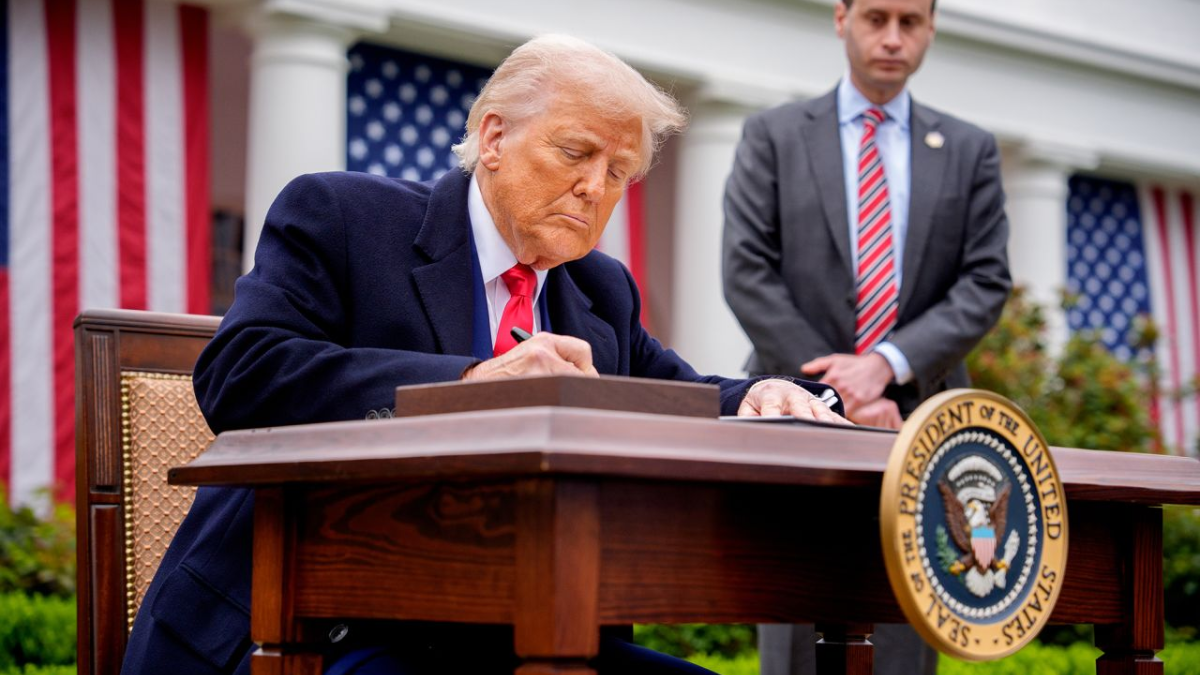American shoppers may soon face noticeable price increases on everyday goods as a result of renewed tariffs, according to Gary Cohn, former top economic advisor to President Donald Trump. In a recent interview, Cohn predicted that the financial burden of newly implemented tariffs on Chinese goods will start to affect retail prices by late May 2025.
Cohn, who served as Director of the National Economic Council from 2017 to 2018, issued a warning about the cascading effect tariffs could have on the U.S. economy, especially with consumers already battling inflationary pressures.
“By the end of May, you’ll start seeing it at the cash register,” he said, pointing to increased costs on consumer electronics, clothing, and household goods.
What’s Causing the Tariff Price Hike?
The Biden administration recently announced new tariff measures targeting strategic sectors of the Chinese economy, including electric vehicles, solar panels, and batteries.
These tariffs are part of a broader effort to protect domestic industries and reduce reliance on Chinese imports. However, these actions may come with short-term costs to American consumers.
Tariffs function essentially as a tax on imports, and many companies choose to pass those added expenses on to consumers. “Retailers and wholesalers can only absorb so much before they increase their prices,” Cohn noted.
Economic Impact: Inflation and Consumer Spending
Cohn’s forecast comes at a time when Americans are already grappling with high prices on food, housing, and energy. The Consumer Price Index (CPI) rose 3.5% year-over-year in March 2025, and further increases caused by tariffs could dampen consumer spending—a critical driver of the U.S. economy.
Here’s how tariffs could intensify inflation:
- Supply Chain Adjustments: U.S. companies may need to source materials from more expensive regions.
- Retail Markup: Businesses may raise prices to maintain profit margins.
- Consumer Behavior: Higher costs could lead to reduced spending, which may slow economic growth.
“It’s a hidden tax,” Cohn explained. “And it’s the American public that ends up footing the bill.”

Political and Market Reactions
The White House insists the new tariffs are strategically focused and necessary to counter unfair trade practices. Officials argue that targeting specific Chinese sectors will help bolster U.S. manufacturing and reduce long-term dependency on foreign supply chains.
Still, some analysts worry about the broader implications. Wall Street has shown signs of unease, with the Dow Jones Industrial Average experiencing minor fluctuations following the tariff announcements. Business groups like the U.S. Chamber of Commerce have urged the administration to proceed cautiously, warning that retaliatory tariffs from China could worsen the situation.
Meanwhile, critics of protectionist trade policies are pointing to past precedents. During the Trump administration’s 2018 tariff wave, similar cost increases were observed across the consumer market. A study by the Federal Reserve estimated that tariffs from that period cost U.S. households up to $1,000 per year.
What Can Consumers Expect by the End of May?
Cohn’s warning suggests that Americans should prepare for steeper prices, especially on goods sourced from Asia. Some of the likely categories to be hit hardest include:
- Consumer Electronics (smartphones, tablets, and accessories)
- Appliances (including microwaves, refrigerators, and washers)
- Home Goods (lamps, furniture, décor)
- Clothing and Footwear
Large retailers may try to minimize the impact by delaying price hikes or absorbing costs temporarily. However, smaller retailers with tighter margins may pass on costs more quickly, potentially driving changes in shopping habits.
Conclusion: Brace for Higher Prices Ahead
As the U.S. tightens its trade stance with China, consumers are likely to be caught in the crossfire—again. Gary Cohn’s forecast, backed by past experience and economic data, suggests that by the end of May, most Americans will feel the effects of tariffs during their regular shopping trips.
Whether or not these trade measures achieve their long-term goals, the short-term result appears clear: shoppers should expect price increases, particularly in imported goods. Policymakers now face the delicate balance of protecting national interests while shielding American families from further economic strain.
For more detailed coverage on the impact of U.S.-China tariffs and consumer prices, visit Reuters.
Disclaimer – Our team has carefully fact-checked this article to make sure it’s accurate and free from any misinformation. We’re dedicated to keeping our content honest and reliable for our readers.
